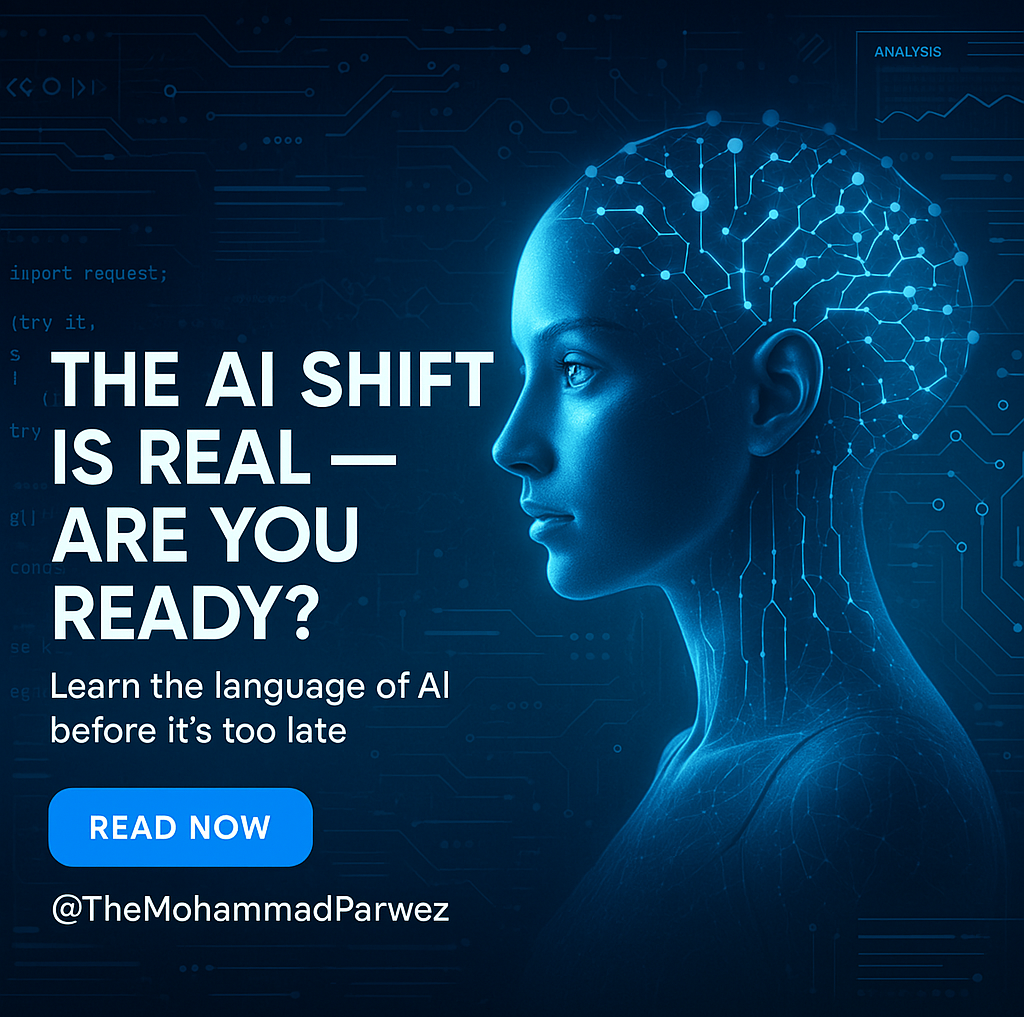🚨 Why IT Professionals Must Learn AI Terms — Before It's Too Late
We're entering a decade where AI will not just support IT — it will reshape it. From how we write code and manage infrastructure to how we make decisions and build products, AI is becoming the new operating layer of technology.
But here's the challenge: many professionals are still unaware of the language of AI — the terms, tools, and concepts that are already shaping the future.
📉 Remember Nokia?
In the early 2000s, Nokia was the undisputed leader in mobile phones. Their hardware was unmatched, their market share was dominant, and their brand was iconic. But they missed one critical shift: the rise of software ecosystems — especially Android. While others adapted, Nokia hesitated. They didn't embrace the new platform fast enough. And by the time they tried to catch up, it was too late. The world had moved on.
The same risk exists today — but with AI.
If IT professionals, developers, and tech leaders don't start learning the language of AI, they risk becoming obsolete in a world that's rapidly evolving. With the help of AI, I've compiled a list of essential terms that every tech professional should be familiar with. These terms are organized across different domains — from user interfaces to core technologies and future trends — to help you stay ahead and not miss out.
🔹 1. User-Facing AI Terms (2024–2026)
| Term | Meaning | Examples | Live Since |
|---|---|---|---|
| AI Assistant / Copilot | AI that helps with writing, coding, planning | ChatGPT, GitHub Copilot | 2022–2023 |
| Prompt | Instruction given to AI | "Summarize this report" | 2020–Now |
| Prompt Engineering | Crafting effective prompts | Used by developers, analysts | 2023–Now |
| LLM (Large Language Model) | AI trained on massive text data | GPT-4, Claude | 2020–Now |
| Multimodal AI | AI that processes text, image, audio, video | GPT-4o, Gemini | 2024–Now |
| Hallucination | AI confidently gives false info | "The capital of France is Berlin" ❌ | Ongoing |
🔹 2. Developer & Functional Terms (2024–2027)
| Term | Meaning | Examples | Live Since |
|---|---|---|---|
| Agent | AI that acts autonomously | AutoGPT, Devin | 2023–Now |
| Autonomous Agent | Plans and executes tasks independently | AI bots, code agents | 2023–2026 |
| Fine-tuning | Customizing AI for specific tasks | Legal AI, medical bots | 2021–Now |
| Zero-shot / Few-shot Learning | AI performs tasks with minimal training | Translation, Q&A | 2020–Now |
| Embedding / Vector Store | Efficient knowledge storage/search | RAG systems | 2023–Now |
| RAG (Retrieval-Augmented Generation) | Enhancing AI with real data | Search-integrated chatbots | 2023–Now |
🔹 3. Core AI Technology Terms (2020–2028)
| Term | Meaning | Examples | Timeline |
|---|---|---|---|
| Machine Learning (ML) | Learning patterns from data | Spam filters, recommendations | 2012–Now |
| Deep Learning (DL) | ML using layered neural networks | NLP, image recognition | 2015–Now |
| Neural Network | Brain-inspired algorithm system | Powering most AI today | Core since 2015 |
| Transformer Model | Architecture behind LLMs | GPT, BERT | 2017–Now |
| Reinforcement Learning | Trial-and-error learning with rewards | Robotics, game AI | 2016–Now |
🔹 4. Ethical, Governance & Reliability Terms (2024–2030)
| Term | Meaning | Relevance | Timeline |
|---|---|---|---|
| Bias | AI may reflect unfair data patterns | Hiring, lending tools | Awareness since 2018 |
| Explainability (XAI) | Making AI decisions understandable | Healthcare, finance | Urgently developing |
| Alignment | Ensuring AI goals match human values | AGI safety labs | 2024–2030 focus |
| Turing Test | Can AI mimic human convincingly? | Benchmark for intelligence | 1950–Now |
| Ethical AI / Responsible AI | Building safe, fair AI systems | Governance frameworks | 2023–Now |
🔹 5. Visionary & Future Terms (2026–2035)
| Term | Meaning | Expected Arrival |
|---|---|---|
| AGI (Artificial General Intelligence) | Human-level AI across domains. AGI could replace humans in sectors like customer service, data analysis, logistics, and even software development. It poses risks of job displacement, ethical dilemmas, and control challenges. | 2028–2035 (speculated) |
| ASI (Artificial Superintelligence) | AI surpassing all human intelligence. Theoretical but could impact governance, defense, and global decision-making. | 2035+ (theoretical) |
| Digital Person / AI Avatar | Personalized AI with memory/emotion. Useful in education, therapy, and virtual companionship. | 2026–2030 |
| AI Regulation / Global AI Law | Policies for safe AI use. Critical for privacy, fairness, and accountability. | 2025–2028 rollout |
Risks: As AI becomes more autonomous, risks include job displacement, misinformation, surveillance, and ethical dilemmas. AGI and ASI, if misaligned, could act unpredictably or harmfully.
Sectors Most Impacted: Healthcare, logistics, finance, education, customer service, software development, and creative industries are already seeing major AI-driven transformations.
What You Should Know: Stay informed about AI capabilities, limitations, and governance. Learn how to use AI responsibly, and understand the implications of deploying AI at scale.
📌 Suggested Learning Path for IT Professionals (2025–2026)
- Start Using AI: Get hands-on with assistants, prompts, and LLMs.
- Understand the Backend: Learn how transformers, embeddings, and RAG work.
- Build or Customize AI: Explore agents, fine-tuning, and multimodal systems.
- Stay Aware: Follow developments in ethics, hallucinations, and alignment.
- Prepare for the Future: Keep an eye on AGI, AI laws, and next-gen trends.
🙏 Thank You for Reading
I appreciate you taking the time to explore this guide on essential AI terms for IT professionals. If you found it insightful or have suggestions for improvement, I'd love to hear from you! Feel free to leave a 💬comment or reach out to me directly via the contact page. Until next time — stay curious, stay adaptive, and keep learning!
